Plantar Wart Removal
Experience the ultimate solution for plantar wart removal in Miami at Luxe Foot Surgery. Our highly trained specialists provide professional and ethical care in a comfortable environment. With a track record of patient satisfaction, we offer personalized treatment plans tailored to each individual.
- Updated on: January 16, 2024
AVERAGE COST
$1,000
PROCEDURE TIME
20 – 40 Min
BACK TO WORK
1 week
FULL RECOVERY
2 weeks
Book Your Free Consultation
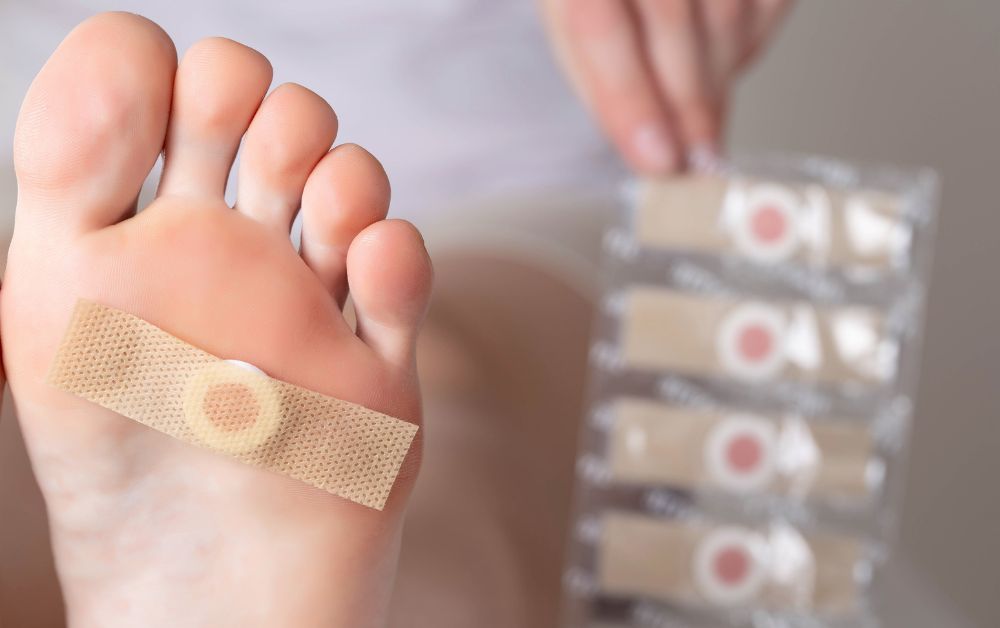
What is a Plantar Wart Removal?
Plantar wart removal is a procedure to eliminate plantar warts, which are small growths that usually appear on the heels or other weight-bearing areas of your feet. These warts are caused by the human papillomavirus (HPV) and can cause discomfort or pain, especially when standing or walking.
There are several methods for plantar wart removal:
Salicylic Acid: Over-the-counter treatments often contain salicylic acid which can help to dissolve the wart over time. This is a slow process and may take several weeks.
Cryotherapy: This is a common treatment performed by a healthcare provider. It involves freezing the wart with liquid nitrogen. This method can cause discomfort and may require multiple treatments.
Laser Treatment: This method uses a laser to burn and destroy the wart tissue. It’s often used for warts that are resistant to other treatments.
Minor Surgery: This involves cutting away the wart or destroying it by using an electric needle in a process called curettage and electrodessication. This is usually done under local anesthesia.
Immunotherapy: This involves injecting a substance that stimulates the immune system to fight viral warts. This is usually considered when other treatments fail.
It’s important to note that even after successful treatment, warts can recur because the virus may remain in the skin. Therefore, prevention measures such as not walking barefoot in public places and not picking at warts are important.
Always consult with a healthcare provider for the best treatment option for your specific case.
How much does wart removal treatment cost in Miami?
| Treatment Method | Estimated Cost in Miami |
|---|---|
| Cryotherapy | $200 – $600 per session |
| Laser Treatment | $200 – $500 per session |
| Minor Surgery (Curettage and Electrodessication) | $800 – $2,000 |
| Immunotherapy | $200 – $1,000 per session |
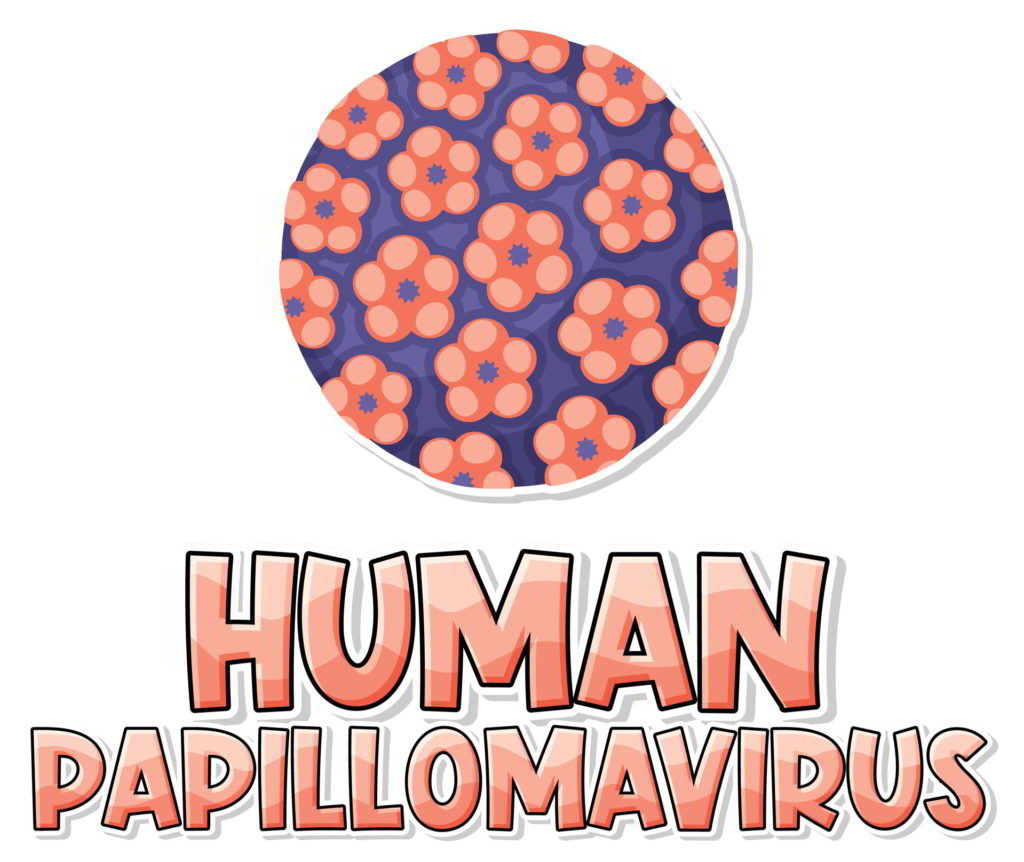
Anatomy of Warts
Warts emerge and develop in the epidermis, which is the outermost layer of the skin. They are characterized by a rough and slightly raised surface. However, certain types of warts, such as those appearing on the face, can be flat and smooth. There are numerous types of warts, each with distinct morphologies, although they share the anatomical features we have discussed.
The central part of warts is often dotted with dark spots, which are the capillaries that supply blood to the wart. Due to their self-contained blood supply, warts can cause significant bleeding if removed without medical assistance. This can also lead to more aggressive regeneration and proliferation. Additionally, warts involve multiple nerve endings, making them potentially painful.
Illustrative Table of Types of Warts that can Appear on the Skin
To provide a clearer understanding of the various types of warts that occur in humans, we have created a table with all the relevant information. While there are at least 100 different types of warts, we will focus on the most common and frequently observed ones
TABLE OF TYPES OF WARTS CAUSED BY THE HUMAN PAPILLOMAVIRUS (HPV) | ||
WART TYPE | APPEARANCE | CHARACTERISTICS |
Common or Vulgar Wart | Small, raised areas on the skin with a rounded shape. The surface is usually rough and somewhat cauliflower-like in texture. Some may have dark spots. The color ranges from light to brownish-gray. | Typically found on the hands, knees, or elbows, but can appear anywhere on the body.
|
Plantar Wart
| Rough and slightly spongy surface that flattens when pressure is applied while walking. This causes the wart to be pushed into the skin, resulting in a less raised appearance. The color is brown with darker spots. | Appears on the soles of the feet, heels, or toes. Multiple plantar warts in the same area are referred to as a “mosaic” pattern. Plantar warts can cause discomfort and pain while walking.
|
Palmar Wart | Granular, protruding warts. Approximately 4% of the population experiences warts on their hands and feet. While not a health risk, their main concern is their unsightly appearance. | Warts that appear on the hands and fingers. They can be transmitted through direct contact or small skin fissures and wounds. |
Flat Warts | Also known as juvenile warts, they are small in size and can go unnoticed. The top surface is flat and appears scraped. They can be flesh-colored, pink, brown, or yellow. | Often found on the face, thighs, or arms. They can appear in clusters of 20 to 200 warts in close proximity. Flat warts are usually painless and can occur in areas with cuts or shaving wounds. They are common in children and can spread through direct contact. |
Filiform Wart | Small-sized warts that resemble flaps or filaments of skin. They consist of thin, finger-like strands. The color is similar to that of the skin. | Typically appear around the mouth or nose, on the neck, or under the chin. They are generally not painful warts. They are contagious and can spread to other parts of the body. They have rapid growth. |
Genital Wart | May have a reddish, pink, gray, or whitish color. The appearance is bulky and somewhat granulated, resembling cauliflower. Others may be very small and harder to detect. | Can appear in the pubic area, on the penis, vulva, anus (inside or outside), and vagina. They can be transmitted through direct sexual contact. Sometimes they appear in groups of 3 or 4 and can spread rapidly. They generally do not cause pain but can cause mild discomfort, bleeding, or itching. |
Periungual Wart
| Start small, needle-sized, and rapidly grow and spread. They feel rough to the touch and have a dry, cauliflower-like appearance. They cause the skin around the nail to look divided. | Appear under or around the fingernails and toenails, making them more challenging to treat. They are often very painful as they increase in size. They affect the growth and appearance of the nails and cuticles. |
Symptoms Indicating the Need for Plantar Wart Removal
Persistent Pain: One of the most common indicators that a plantar wart needs removal is ongoing or increasing pain. This can make standing, walking, or running uncomfortable or even unbearable.
Spread of Warts: If you notice that the wart is growing in size, or if new warts are forming around the initial wart, it may be time to consider removal. Warts can spread through direct contact, so treating them early can help prevent this.
Interference with Daily Activities: If a plantar wart is causing you so much discomfort that it’s interfering with your daily activities, it’s definitely a sign that it needs to be removed.
Changes in Color or Appearance: Any changes in the color or appearance of the wart should be evaluated by a medical professional. These changes could indicate that the wart is becoming more deeply rooted or that it’s something more serious than a wart.
Warts That Keep Returning: If you’ve treated a plantar wart and it keeps returning, it might need a different form of treatment or removal.
Complications in People with Weakened Immune Systems: For individuals with compromised immune systems, such as those with HIV/AIDS or undergoing chemotherapy, plantar warts can be more severe and harder to treat. In such cases, professional removal may be required.
It’s important to consult with a healthcare provider or a dermatologist if you experience any of these symptoms. They can help determine the best course of treatment for your plantar warts, which may include over-the-counter treatments, prescription medicines, or surgical removal.
Who is More Susceptible to Plantar Warts?
Plantar warts, caused by the human papillomavirus (HPV), can affect anyone. However, certain individuals are more susceptible to this type of viral infection:
Children and Teenagers: Young people are more likely to develop plantar warts compared to adults, as their immune systems may not have encountered and built defenses against the virus yet.
People with Weakened Immune Systems: Those with weakened immune systems, due to conditions like HIV/AIDS or medications like immunosuppressants, are more prone to HPV infections, including plantar warts.
People with Damaged Skin on the Feet: Warts often enter the body through small cuts or scrapes. So, if you have damaged skin on your feet, you’re more likely to develop plantar warts.
People who Go Barefoot in Public Areas: Public showers, locker rooms, or swimming pools are places where the wart-causing virus thrives. Walking barefoot in these areas increases the chances of contracting the virus.
People with a History of Plantar Warts: If you’ve had plantar warts before, you are more likely to get them again compared to someone who has never had them.
Remember, the best way to prevent plantar warts is to maintain good foot hygiene, wear shoes in public areas, avoid direct contact with warts, and keep your feet dry to make the environment less hospitable for the virus.
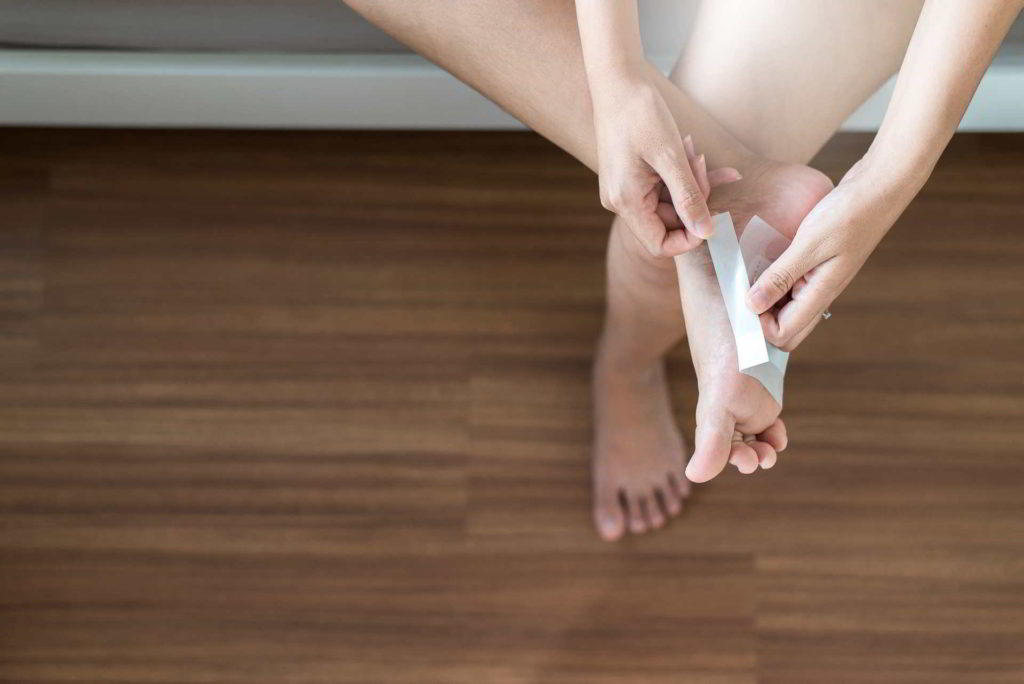
Minimally Invasive Laser Treatment for Plantar Wart Removal
Laser treatment provides an effective, minimally invasive solution for plantar warts. The process involves using a concentrated laser beam to heat and destroy the wart tissue.
- Procedure: A laser targets the wart’s tiny blood vessels, heating and eliminating them. This deprives the wart of nutrients, causing it to naturally fall off over time.
- Recovery: Patients can usually resume normal activities almost immediately post-treatment. Side effects are minor, such as slight discomfort in the treated area.
- Results: Laser treatment is effective at removing warts and preventing recurrence, but results can vary. Full effects of the treatment may take a few weeks to appear.
As always, consult a healthcare professional to determine if this option is best for you.
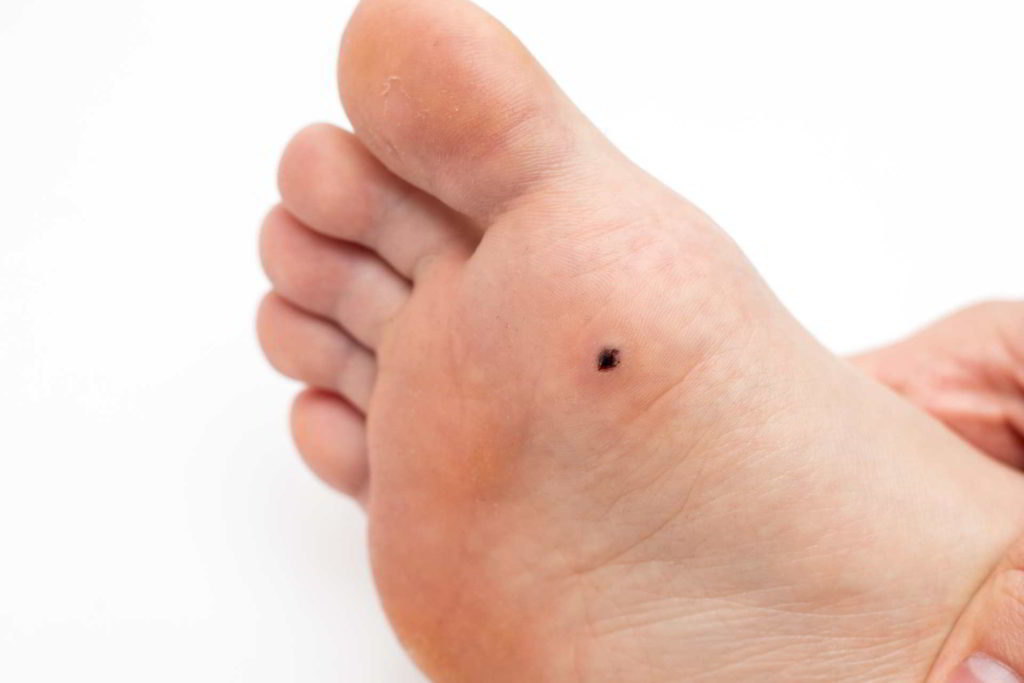
Duct Tape for Wart Removal
The duct tape method has shown positive results in many patients, although clinical studies have produced mixed conclusions. While some studies have demonstrated that individuals who use duct tape correctly have a 45% higher success rate compared to cryotherapy, others have not been able to establish its effectiveness when compared to other wart removal treatments. Nonetheless, anecdotal evidence suggests that duct tape is a low-risk, low-tech, and positive procedure.
The method involves placing a patch of duct tape over the wart for 6 days. After this time, the tape is removed to soak the wart and then filed down, leaving it uncovered overnight, and applying the duct tape again in the morning. Among the various types of duct tape available, the standard silver-colored tape is the most effective, as it is stickier and has a stronger adhesive compared to transparent tape.
Minor Surgery of Scraping and Cutting for Wart Removal
This treatment for wart removal is also known as desiccation, cauterization, or curettage. It is performed under local anesthesia, allowing the specialist to work on the wart using an electric needle while scraping it with a specialized instrument called a curette, which has a spoon-shaped tip. Alternatively, the wart can be removed using a surgical scalpel. It’s important to note that this technique may leave a scar on the skin. Typically, the cauterization and curettage procedure is considered a last resort when other methods have been unsuccessful.
Oral Medications for Wart Removal
In cases where warts do not respond to the various methods we have discussed, oral medications may be prescribed. One of the most effective medications is imiquimod or Aldara, which is commonly used to treat both genital warts and cutaneous warts. This medication contains an active substance that can induce an allergic response and irritation in the area where the wart is located.
Another approach is the injection of other agents into the wart, such as mumps or Candida antigen. Additionally, certain chemotherapy medications can be applied topically or injected into the wart. It’s important to note that the effectiveness of these techniques is not well-established, and they may come with potential side effects.
Immunotherapy for Wart Removal
Immunotherapy harnesses the patient’s own immune system to eliminate warts. This type of treatment is typically employed when the wart is resistant to more conventional approaches. One form of immunotherapy involves the direct application of a chemical substance such as diphencyprone (DCP) onto the warts. This induces a mild allergic reaction around the injected wart, which can lead to its disappearance.
Immunotherapy is often considered for warts that have not responded well to other treatments. However, it is important to consult with a healthcare professional who can assess your specific condition and determine the most suitable course of action.
Frequently Asked Questions about Plantar Wart Removal Treatment at Luxe Foot Surgery
At Luxe Foot Surgery, we understand that our patients have common questions about wart removal treatments. Here are some of the frequently asked questions and their answers. If you have a question that is not addressed here, please feel free to contact our advisors through a phone call, our website, or our social media channels. We are here to assist you!
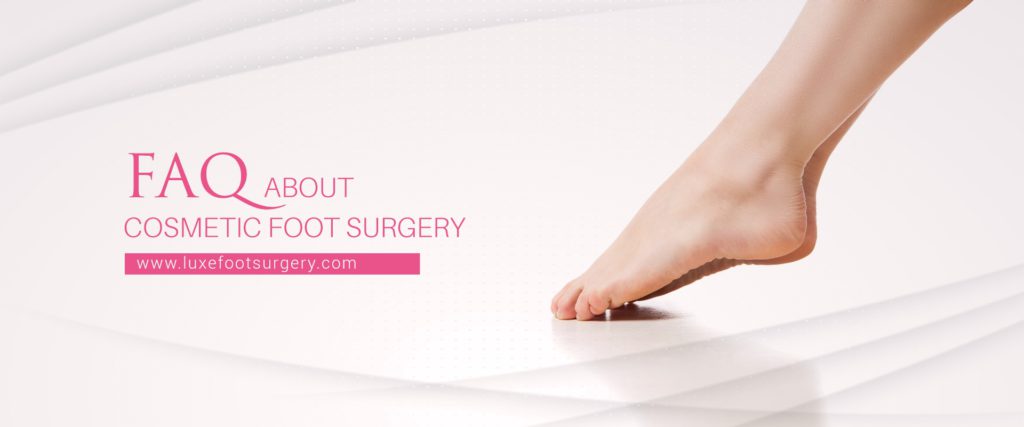
Yes, warts are contagious and can be transmitted from person to person through direct contact with the skin. They can also be spread through contact with open or wounded skin, such as during shaving. Additionally, the virus can be transmitted indirectly, for example, by frequenting moist public areas or sharing intimate items like towels. Another way to contract warts is through direct sexual contact. It is important to take precautions to prevent the spread of warts, such as practicing good hygiene, avoiding direct contact with other people’s warts, and practicing safe sexual behaviors.
Warts, although often harmless, can have implications if left untreated. Understanding the potential consequences can help individuals make informed decisions about managing their warts. Here’s what you need to know:
Prolonged Duration: Warts have the potential to persist for an extended period if not treated. While some warts may naturally resolve over time, others can remain for months or even years. Delaying treatment increases the likelihood of warts spreading to other areas of the body or to other individuals.
Increased Discomfort: Untreated warts can cause discomfort, especially if located on weight-bearing areas such as the feet (plantar warts). These warts can be painful and interfere with daily activities like walking or running. Additionally, warts in visible areas like the face or hands can affect self-esteem and confidence.
Spreading to Others: Warts are contagious and can be easily transmitted through direct skin-to-skin contact or by sharing personal items such as towels or razors. Failing to treat warts increases the risk of spreading the virus to family members, friends, or sexual partners.
Potential for Complications: While rare, untreated warts can lead to complications in certain cases. For example, continuous friction or trauma to a wart can cause it to become irritated, inflamed, or infected. Infected warts can be accompanied by pain, redness, and discharge. In some instances, untreated warts may develop into a larger cluster or form new warts in nearby areas.
Impact on Aesthetics: Warts, especially those in visible areas, can be aesthetically displeasing for individuals. They may feel self-conscious about their appearance, particularly if the warts are large or numerous. Treating warts can help restore confidence and improve overall well-being.
Lowering Transmission Risk: Treating warts not only helps alleviate discomfort and reduce the risk of complications but also minimizes the chances of spreading the virus to others. By seeking appropriate treatment, individuals actively contribute to preventing the further transmission of warts.
Laser treatment for wart removal is generally considered to be a minimally painful procedure. Most laser treatments are well-tolerated by patients and do not require anesthesia. However, if the wart is larger or located in a sensitive area, the dermatologist may administer local anesthesia to ensure patient comfort during the procedure.
During the laser treatment, the laser beam is targeted at the wart, delivering precise energy to destroy the wart tissue. The laser selectively targets the blood vessels that supply the wart, causing them to coagulate and effectively eliminating the wart. The laser energy also helps to stimulate the body’s natural healing response.
Patients may experience a sensation of warmth or mild discomfort during the laser treatment, similar to the feeling of a rubber band snapping against the skin. However, any discomfort is usually temporary and well-tolerated. The duration of the laser treatment depends on the size and number of warts being treated.
Wart removal treatments can be applied to children with the guidance of a healthcare specialist who will determine the most suitable option for each case. Topical medications, cryotherapy, and minimally invasive procedures are commonly used. Parents should carefully follow the healthcare provider’s instructions, monitor progress, and report any concerns or side effects. While most treatments are safe, individual responses may vary. It is important to consult with the healthcare provider if there are any concerns or if the warts do not improve. With proper medical guidance and parental support, children can undergo successful wart removal treatments.
Indeed, some wart removal treatments may have side effects, while others might not. It’s crucial that patients inquire with their dermatologist about the potential risks and side effects of the specific treatment they’re undergoing for wart removal. Being well-informed helps ensure the best possible outcome and can allow patients to take preventive steps against any undesirable side effects.
If you’re dealing with warts or have previously experienced them, it’s crucial to take specific preventive measures to avoid recurrence and spread. Here are some of the necessary steps you can follow:
- Avoid scratching yourself after touching a wart. It can lead to the spread of the virus to other parts of your body.
- Resist biting your nails or cuticles. These habits can introduce the wart virus to these areas.
- Regular hand washing is essential. It helps eliminate any viruses that might have found a home on your skin.
- Keep your nails short. This can prevent the wart virus from hiding under longer nails.
- Disinfect and cover any wound on your skin promptly. Open skin can be an inviting site for the wart virus.
- Pay attention to the hygiene and health of your hand and foot skin. Healthy, intact skin is less susceptible to warts.
- Avoid sharing personal hygiene items with others. The wart virus can spread easily through shared objects.
Latest Articles

Understanding the Costs of Laser Corn Removal
Alleviating discomfort and nagging pain caused by corns on the patient’s feet has never been easier to do. Removing painful
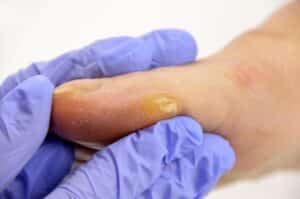
Laser Deep Corn Removal: What You Need to Know
Deep corns develop on the joint areas on feet where the most pressure is exerted while walking and running. Traditional
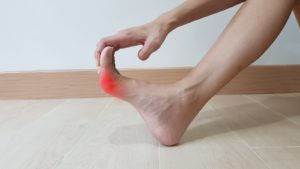
Difference Between a Bunion and a Corn
It’s not uncommon for people to confuse bunions and corns – even though these two conditions have quite different etiology,

Are a Corn and a Bunion the Same Thing?
Cons and bunions are among the most common podiatric conditions. But do you know what they are exactly – are
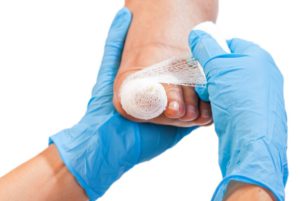
Toe Plastic Surgery Cost: What You Need to Know Before Making a Decision
These average costs are based on general data and may vary depending on factors such as geographic location, surgeon’s fees,
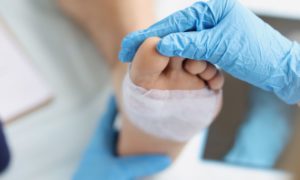
Corn Surgery Recovery – Ensure a Smooth Healing Process
Those with stubborn and painful corn problems often choose to undergo a corn removal surgery to help them get rid
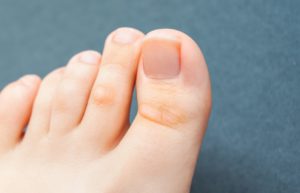
Toe Corn Removal Surgery Cost
The cost of corn removal surgery can vary depending on several factors, including the location, the complexity of the procedure,
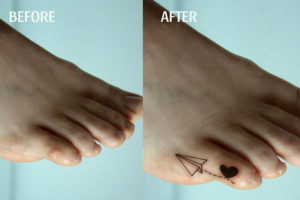
Toe tattoos to cover corns!
Toe tattoos provide a fashionable way to conceal corns while adding a touch of personal flair. In this article, we’ll
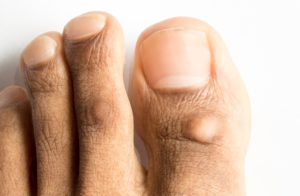
Corn Removal Surgery Cost in NYC
The cost of corn removal surgery in New York City can vary depending on several factors, including the complexity of
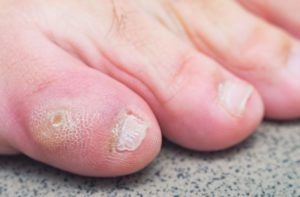
How Does a Podiatrist Remove a Corn?
Corn is one of the conditions that podiatrists see almost every day – it’s so common that most people have
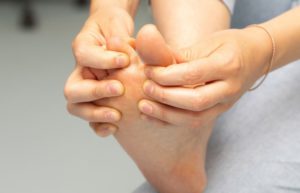
How to Remove Soft Corns?
Corns form when there is friction or pressure over a bony area on your foot. Generally, the areas that are
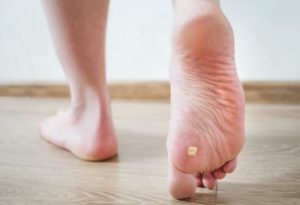
How to Remove Seed Corns on Bottom of Feet?
Thickened skin that develops on toes and feet as a result of repeated friction or pressure is referred to as